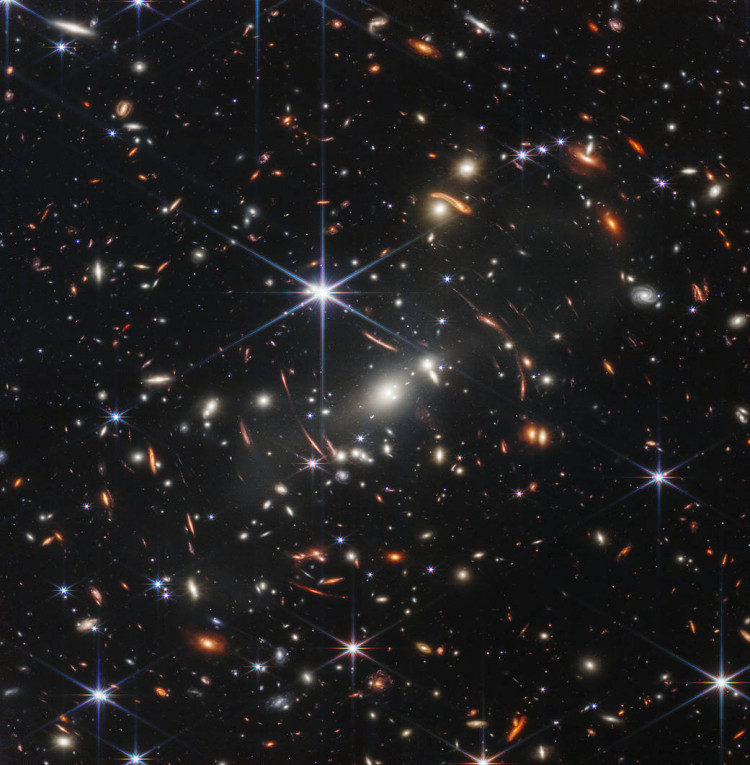The James Webb Space Telescope (JWST) is a huge observatory that is pushing the boundaries of astronomical observation, and its first deep-field image is zoomed in further than any previous infrared image of the cosmos. It has revealed galaxies we had never been able to see before. A first-of-its-kind infrared image from a location so far away in the universe that it depicts galaxies and stars as they were 13 billion years ago.
At the end of 2021, JWST launched from French Guiana, and in early 2022, it reached its final orbit of the sun. The first photographs of sufficient quality to be used for science have begun to arrive on Earth. The first of these photographs was revealed by US president Joe Biden on July 11 during a press conference at the White House. Four more are expected to be made available on July 12.
The first image shows what scientists refer to as a gravitational lens in the space region known as SMACS 0723. In situations like this, a large object very close to Earth acts like a magnifying glass, extending the light of anything behind it and distorting space.
The gravitational lens in SMACS 0723 is particularly strong because the nearby object distorting space-time is a large cluster of galaxies rather than a single galaxy.
The small specks and streaks of light amplified by the lens and visible around the image's edges are distant, extremely faint galaxies - some of the first to form.
We couldn't see these galaxies before now because of the universe's expansion: the further away an object is, the faster it moves away from us, and the redder its light appears as a result of that motion. The Hubble Space Telescope observes light primarily in visible wavelengths, whereas JWST uses infrared, allowing it to detect objects that appear so red that Hubble cannot see them.
"We think that when stars form from primordial material in the distant universe, they form in a very different way, but we've never really observed that before," Stephen Wilkins said at the University of Sussex in the UK. "There's a lot of crucial physics there that we don't know anything about."
It may be possible to unravel the puzzle of how the earliest stars and galaxies developed by learning more about how these early stars galaxies formed.
This initial picture is a tantalizing preview of what the JWST will be able to capture in the future, including more images and in-depth observations of the universe. The floodgates of JWST research are about to open up and completely alter our perception of the universe in the coming weeks.






